 |
| Email Home Page |
 |
| Email Home Page |
|
|
|
This needs to be said, for those who will not read beyond this paragraph. When handling firearms, never let the muzzle (the end of the barrel where the bullet exits the firearm) sweep another person. Imagine that a laser is aligned with the barrel of the firearm. Handle it so that that laser would NEVER shine onto anyone. Handle the firearm as if it's always loaded and there is a random timer that could cause it to fire unexpectedly at any time. If you do this, it will significantly reduce the chances that there will be any accident that could injure another person. If you're training someone to handle firearms, buy a cheap ($2) laser pointer and use rubber bands to hold it on the barrel of the gun they're training with. It would be best if the first gun was an air rifle but it can be done safely with real firearms. Have everyone watch for the laser and if it sweeps someone, have them immediately point it out. If you're training multiple people, you can do this with wooden dowel rods ($2 each from most hardware stores). For those parents who intend to train their children in the use of firearms, I'd suggest that you never buy them any toy guns. They should not get accustomed to pointing a gun at someone and pulling the trigger.
Finger OFF of the Trigger:
Load Only One Round:
Range Rules:
Barrel:
Chamber:
Cylinder:
Muzzle:
Crown:
Trigger:
Trigger Guard:
Sear:
Fore-end:
Buttstock:
Pistol Grip:
Loading/Ejection Port:
Loading Port:
Bolt:
In general, there are two types of firearms, long guns and handguns. Shotguns and rifles are considered to be long guns. The two firearms below are considered to be handguns.
Pistols and Revolvers:
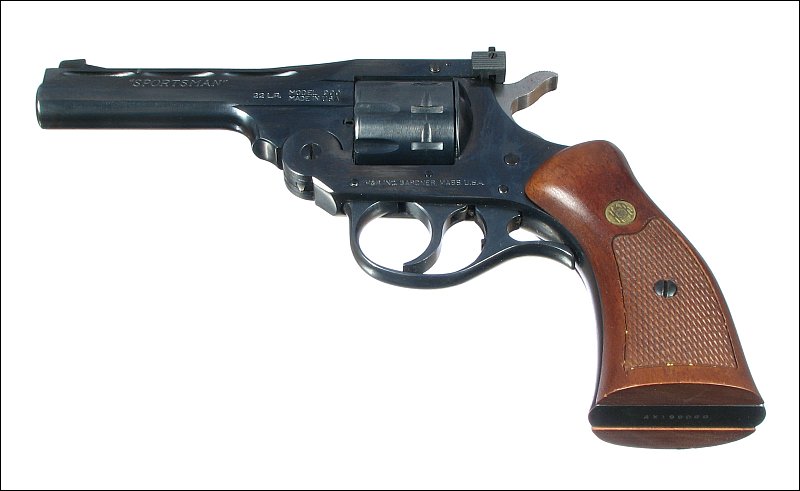 Many times, you'll hear handguns like the one below referred to as 'automatics'. These are semi-automatic handguns. This means that you have to pull the trigger each time you want to fire a round.
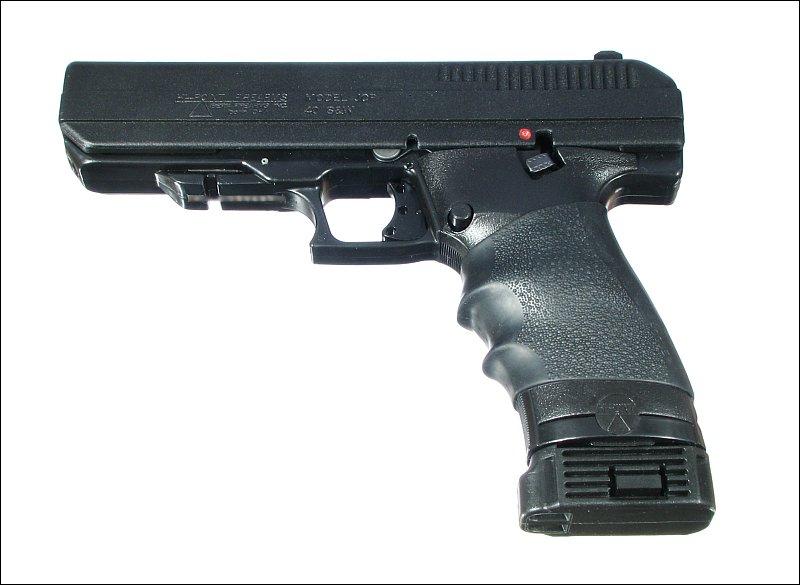
As was previously stated, you should always treat firearms as if they're loaded. With a revolver, it's fairly easy to confirm that it's not loaded. If all of the chambers are empty, it's not loaded. This doesn't mean that it's OK to point it at someone but if you unload it, it's safe to clean/check/repair/modify. However, if you put it down and walk away from it, when you come back to work on it, you should re-check it to confirm that no one has loaded it. There are several revolver configurations. Most have the cylinder on a hinge and the cylinder swings out of the side of the frame. The revolver below has a break-over frame. As you can see, the cylinder is completely empty. There is no way that you can miss seeing a loaded chamber (and if you can, you shouldn't be handling firearms). When you have firearms on a shooting bench, you should have revolvers open as they are below. It allows everyone to see that they're completely safe (can't fire and are not loaded).
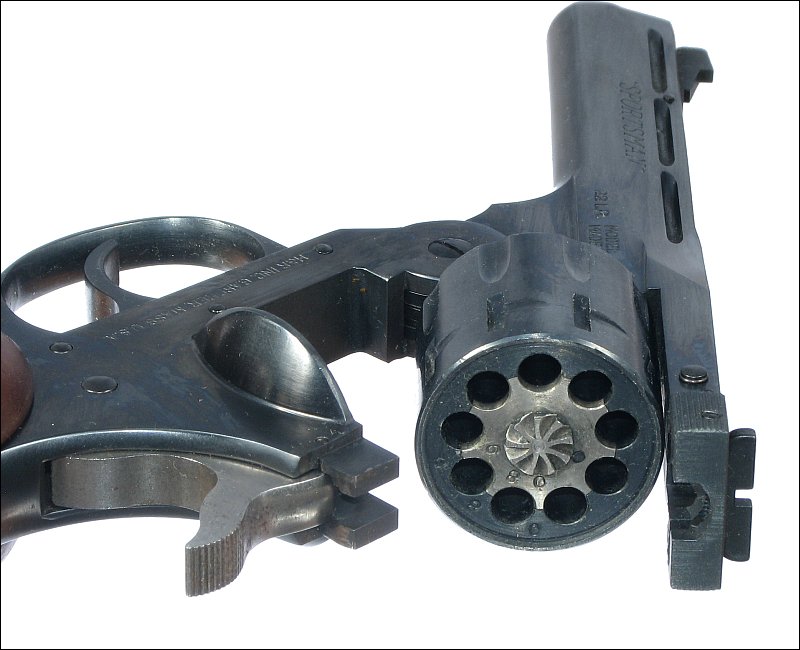
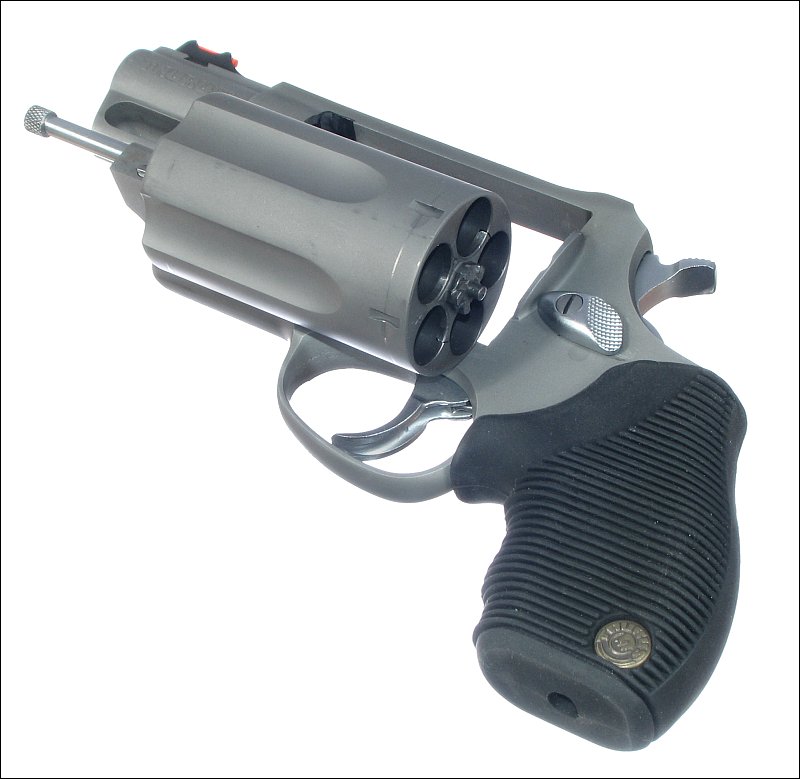 With semi-automatic pistols, it's not as easy to see that they're unloaded. Many people believe that if you remove the magazine from a pistol, it's safe to handle. This is not the case. When you load a semi-automatic pistol, you insert the magazine, pull the slide back and release it. When you release the slide, the loading mechanism strips one round from the magazine and chambers it. If you remove the magazine, that round remains in the chamber and can fire. In some of the newer pistols, the gun will not fire without having a magazine inserted but if you insert an empty magazine, the chambered round can fire.
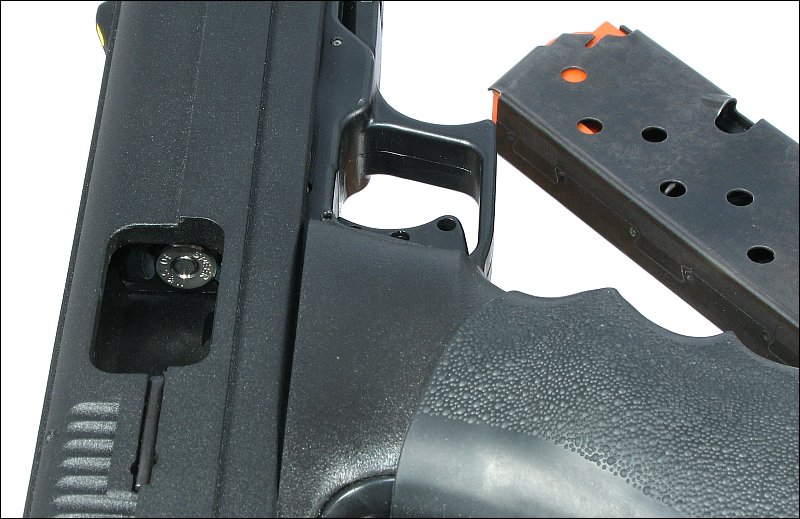 The pistol above has a round chambered. The one below has an empty chamber. When handling this type of pistol, you need to confirm that there is no magazine in it and that the chamber is empty.
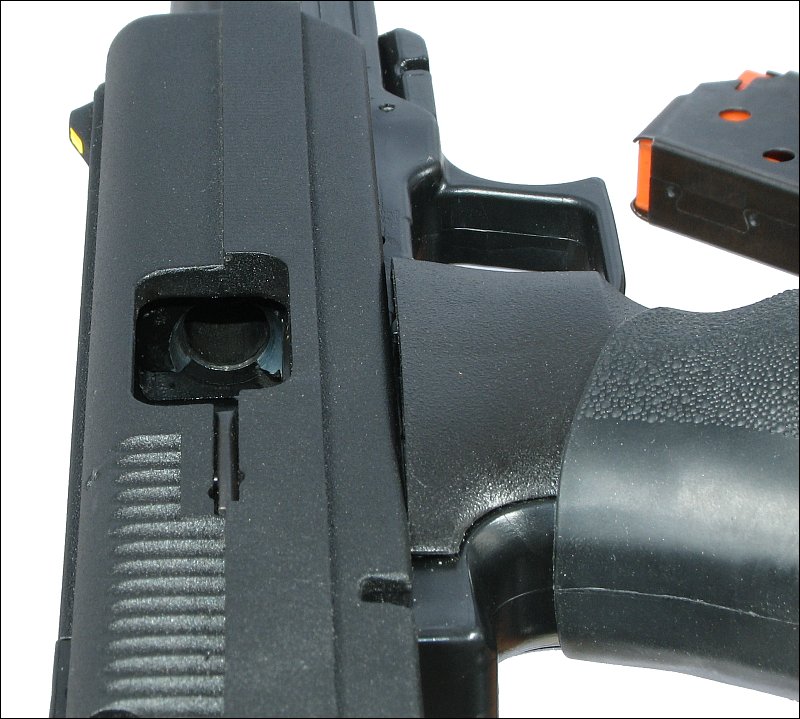 At many competitions and shooting ranges, shooters use chamber safety flags to show that their semi-automatic firearms are unloaded. Some shooters insert them in one chamber of a revolver to keep the cylinder open. The following two images show one type of flag in a pistol.
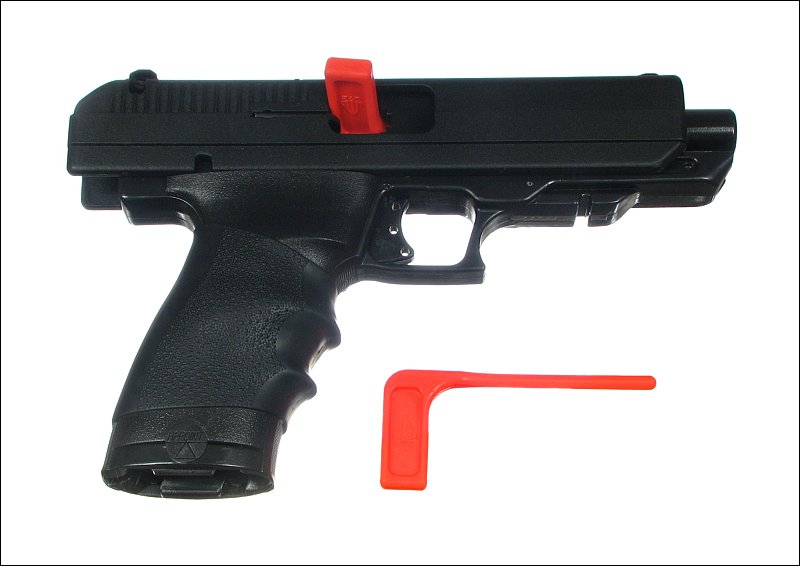
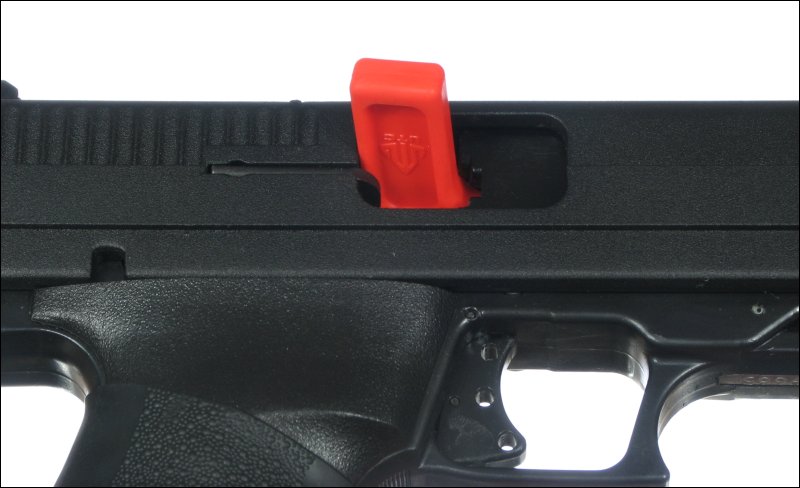 Many semi-automatic pistols have safeties that prevent them from being fired accidentally. It's more important on a semi-auto than on a revolver because the gun could be cocked with a chambered round and a light touch to the trigger could cause it to discharge. For a revolver, it's generally obvious if it's cocked because the hammer is back. For double-action revolvers, it's relatively difficult to fire if the hammer isn't cocked. This is because it takes a fair bit of force to cock the hammer with the trigger. Some of the older revolvers had their firing pins mounted directly on the hammer. You could see it protruding if you pulled the hammer back. Newer revolvers have frame-mounted firing pins. The older revolvers were capable of firing a round if they were dropped and the hammer hit a hard surface. The newer revolvers use a 'transfer bar' as a safety. For the hammer to apply significant force to the firing pin, the transfer bar must be between the firing pin and the hammer. The only time the transfer bar is in that position is when the hammer is fully cocked. Below, you can see the transfer bar in position for firing.
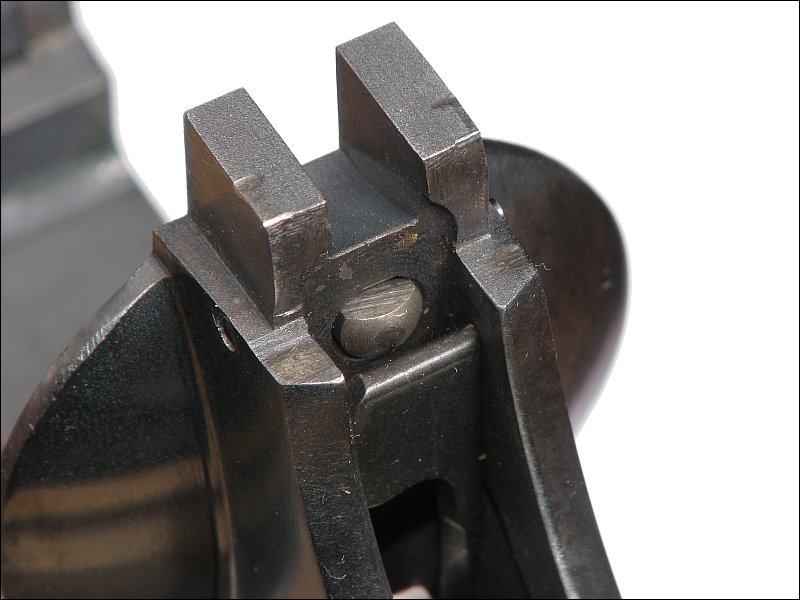
Dry Firing:
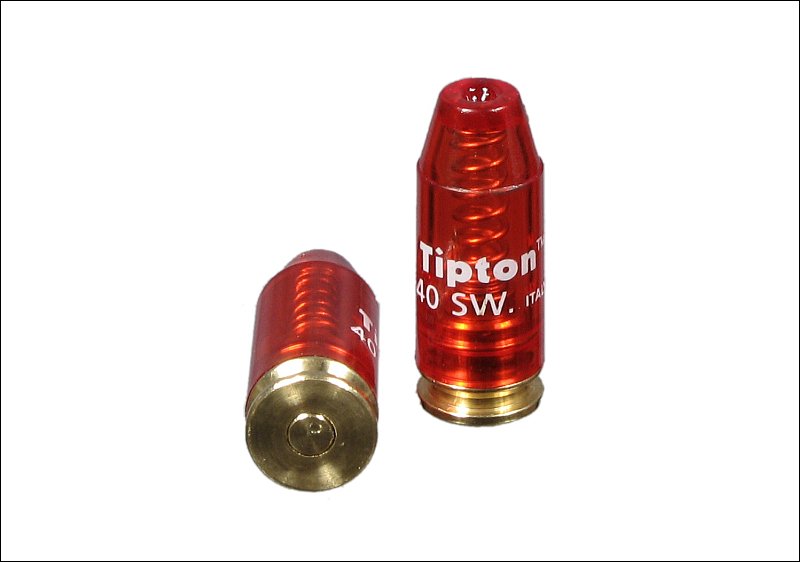
VERY IMPORTANT!
John Wayne Load:
Double-Action vs Single Action:
Ammunition Terms: The straight, cylindrical part of the cartridge is called the case or 'brass'. It's often made of brass but can also be made of steel. It's not always easy to tell if a chrome-like case is steel or brass because the brass is sometimes plated. You've likely heard the terms 'rimfire' and 'centerfire'. These refer to the type of 'primer' that's used for the cartridge. The centerfire cartridge uses a round primer pressed into the back of the casing. The firing pin strikes this primer. A rimfire cartridge is struck on the outer rim of the cartridge. Below, you can see a centerfire cartridge on the left and a rimfire cartridge on the right. The left is a .40 S&W. The one on the left is a .22LR (long rifle - can be used in rifles and handguns designed for it).
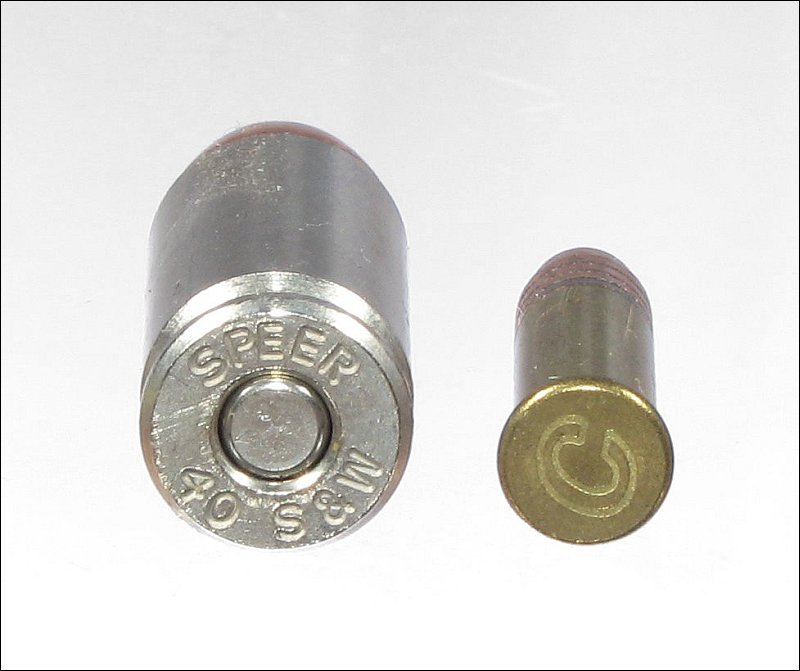
Types of Bullets:
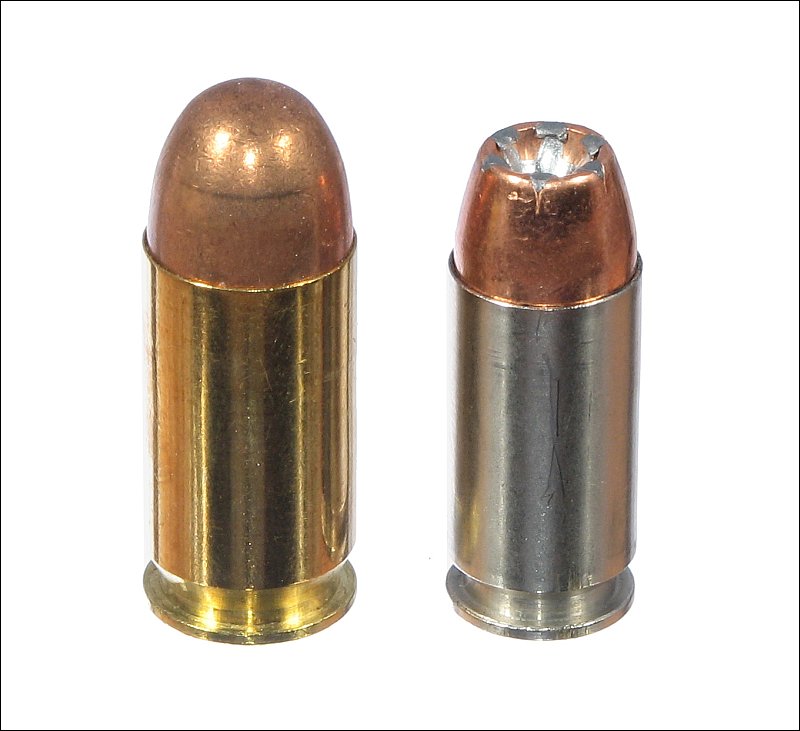
Why Hollow-Points?
Shotguns and Shotshells: Below, you can see 3 different types of shotshells. The one on the left is a low power, #6 shot (specifies the relative diameter of the BBs). The one in the center is a 000 (triple-aught) buckshot shotshell. The one on the right is a PDX1 personal defense round. The PDX1 ammunition (made for personal defense) contains a combination of copper discs and BBs. The BBs help increase the chance of a hit (in the case of poorly aimed shot). The discs are designed to produce devastating wounds.
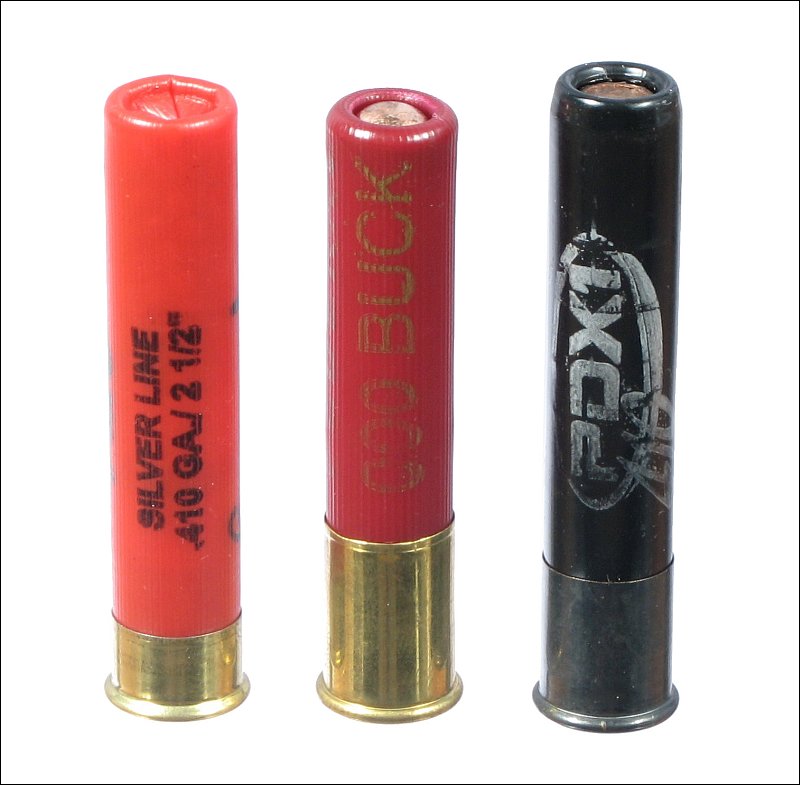 The bore of handguns and rifles are typically referred to by the diameter of the bore. For most, the diameter is in inches. For example, a .45 ACP is 0.45" in diameter. For others like the 9mm, the diameter is in millimeters (obviously). For shotguns, 'gauge' is used. You've heard 12 gauge or 20 gauge. Here, lower numbers are larger. Shotgun shells that have a single projectile are known as slugs. Slugs are relatively heavy. 1oz is typical for 12ga. Many people think that you can simply point a shotgun in the direction of a target and the target will be hit. At close ranges (like those for personal defense, in a home or business), a shotgun MUST be aimed as carefully as a rifle. Out to about 20 yards, the shot (BBs) will maintain a tight pattern. The actual pattern is determined by several things but the barrel's 'choke' is typically what determines how tight the pattern will be. You'll see chokes listed as 'cylinder', 'modified' and 'full' (just to name a few. Of these, 'cylinder' will have the greatest spread and 'full' will have the least spread. Some think that using shot (BB) type shells in a handgun means that you can simply point in the direction of the target and the target will be taken down. That's not the case in most instances. It's not that the target won't be hit but it may not be hit with enough lead to produce significant damage. It may only make them mad, in the case of a home invader or other bad guy. When using shot-shells in a handgun, you must aim carefully. Using special shells (like the PDX1) will make it more effective than using something like 'birdshot'. Using shot-shells with larger BBs (lower number, 0g buckshot instead of 4g buckshot) will make it more effective. With a long-barreled shotgun, the shot remains in a tight pattern for well beyond 20 yards. That's not the case for shot-shells in a handgun. In a handgun, the pattern opens VERY quickly. Being more than about 20 feet from the target may result in only minimal damage to the target. The Taurus Judge (light-colored revolver shown earlier on this page) is a revolver that's designed to fire .410 shotgun shells. They can also fire .45LC rounds (.45 Long Colt is different than the .45 ACP). Many people buy these for self defense because they can fire shotgun shells and that gives them more confidence in hitting the target. They may not realize that they have to use the special ammunition to make shot shells effective. Using shot shells with tiny BBs (like #9 'birdshot) isn't going to be very effective in taking down an intruder unless fired within only a few feet of the target. With the proper ammunition, however, handguns that fire shot shells can be effective.
Revolver vs Semi-automatic Pistol for Self-Defense:
Revolver: One of the most common complaints about revolvers is that they don't hold many rounds and take too long to reload. To make reloading a bit faster, you can use speedloaders. The one below is an HKS model 10a. You load the ammunition into the speedloader and twist the knob to lock the cartridges in place (you can see the locking tabs in the second photo). When you need to re-load the revolver, you eject the spent casings, insert the un-spent rounds and twist the knob to release the ammunition. As with anything that you may need to rely on in an emergency situation, you should try the loader with your handgun. In some instances, there won't be sufficient clearance between the loader and either the frame or the grips. If the loader doesn't have sufficient clearance, it may not release the cartridges cleanly. Even if there is clearance, the rounds may not drop out of the speedloader. Sometimes you have to jiggle it a bit to get them to drop into the chambers.
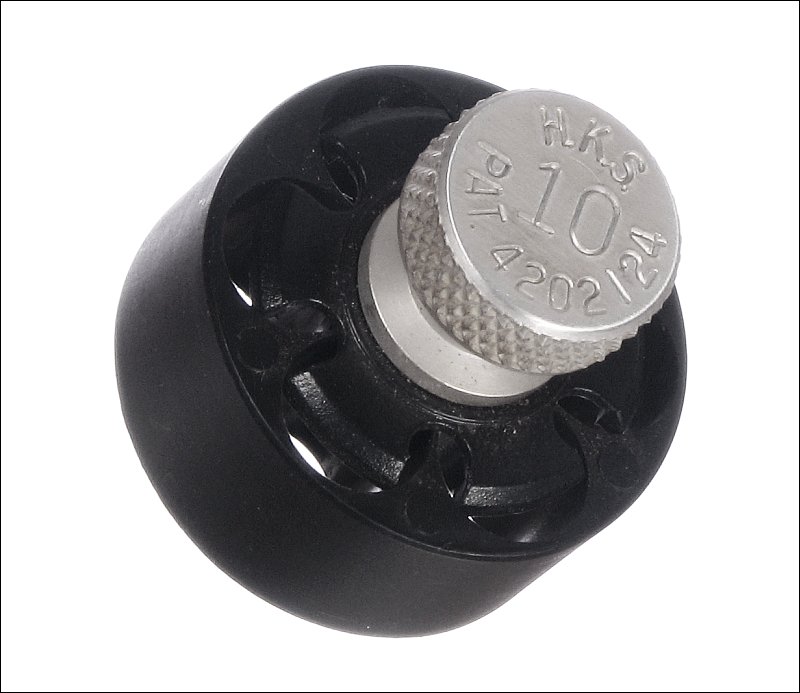
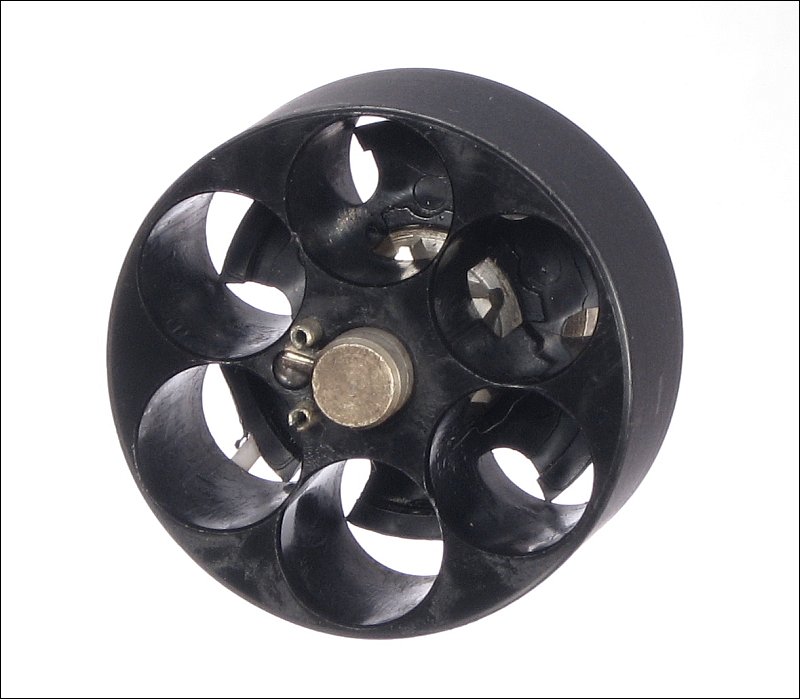
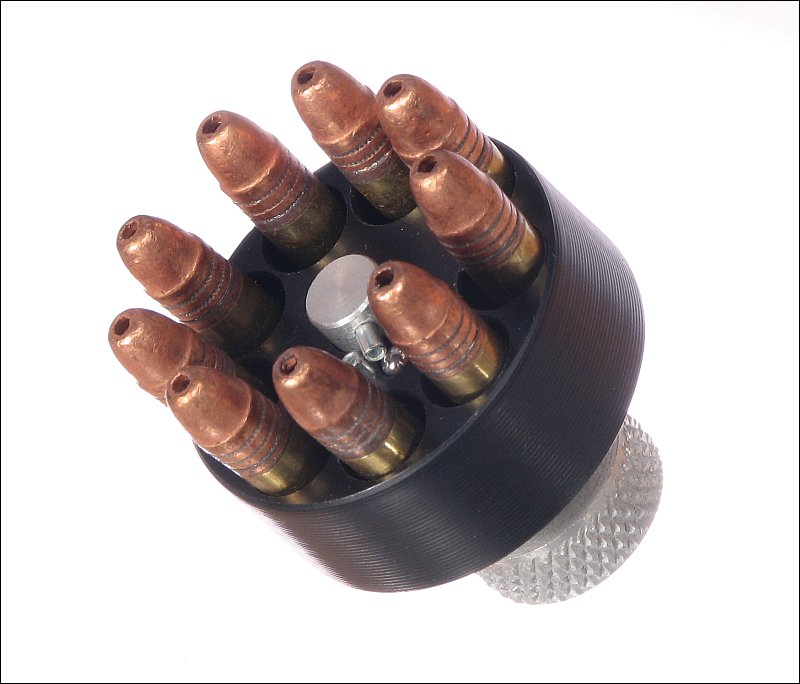
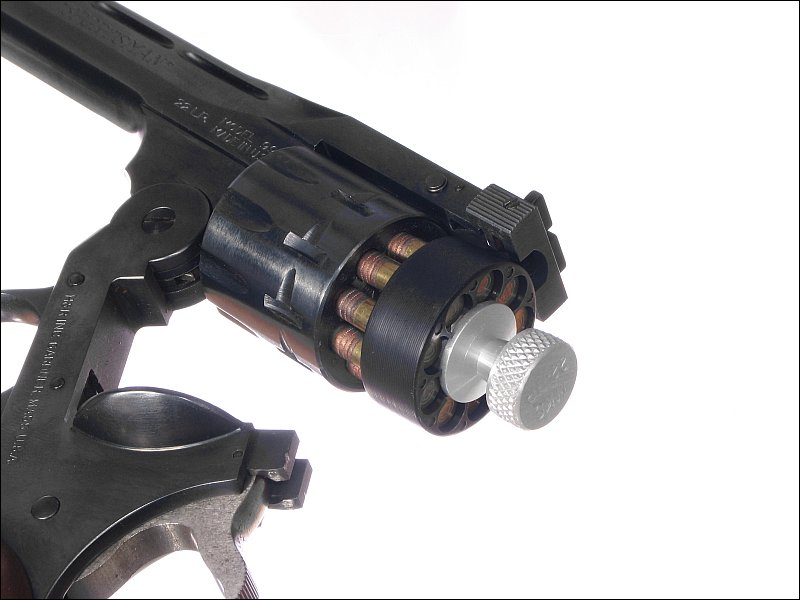 Another advantage of a double-action revolver (although this is very variable from one handgun to another) is that it's difficult to fire the revolver easily if the hammer isn't cocked. The heavy trigger pull helps prevent someone from firing a round unintentionally.
Important!
Semi-automatic Pistol: They can malfunction. If the pistol hasn't been carefully checked with the type of ammo being used and the magazine(s) being used, there could be malfunctions. Some semi-automatic pistols are extremely sensitive to the ammunition. They require enough force back against the slide to cycle the action. If there isn't enough force (sometimes due to using ammunition with a bullet of insufficient mass or the powder load is inconsistent or borderline too light), the action won't cycle completely and the shooter will have to clear the gun manually. Some are also sensitive to the type of bullet being used. A hollow-point bullet is much more likely to get jammed than a standard round-nosed bullet because the tip of the bullet is irregular. To confirm that your pistol works well with the ammo and magazines you have, you need to take it to the firing range and fire at least 3 or 4 magazines through it. Fire at least one magazine as fast as you can. Some gun/magazine/ammo will not work well when fired quickly. You need to be sure that yours will work properly in a panic situation. In some instances, a round won't load into the chamber properly. Sometimes the casing from the (previous) spent round won't clear the ejection port and will jam the gun. When this happens, the shooter has to manually get the gun cleared and a new round chambered. This can be difficult if you're nervous and/or in a poorly lit area. Many people store their pistols with no magazine. If the user fails to insert a magazine and chamber a round, the gun is useless. If a magazine is already loaded but a round isn't chambered, the gun won't fire until one is manually chambered. Some pistols require quite a bit of effort to pull the slide back to chamber a round. For some, it may not be possible to properly chamber a round if they don't have strong hands. If the slide isn't pulled back far enough, it could cause the gun to jam. Semi-auto pistols also typically have a safety that prevents the pistol from firing. If the safety is on and the user doesn't know about it and can't figure out how to release the safety, the gun is useless. On some pistols, the safety is very difficult to switch off. This could be a problem for someone with weak hands. If you're not careful, you can accidentally depress the magazine release button which can cause the magazine to drop out of the pistol. If this happens when you're moving and/or in a poorly lit area, it could mean that you will lose the magazine. When using a semi-automatic pistol, you have to be careful not to get any part of your hand behind the slide. Most pistols are designed so that the web of your hand is held down below the slide. If you don't have a lot of experience with a semi-auto pistol, you may be tempted to hold your other hand on top of your dominant-side hand. This will generally put your thumb directly behind the slide. Firing the pistol like this will cause (possibly significant) injury to your thumb. If you think about it, the slide is relatively heavy and held forward with a fairly strong spring. The energy driven into the slide by the firing of the pistol is sufficient to move the slide back so fast that it's difficult to see the slide cycle. It was stated previously that you need to practice with your weapon. When you do, practice with two hands but before you fire the first shot, make sure that no part of either hand is in contact with the slide (on either side of the pistol or in the rear). In the next two photos, you can see a pistol with the slide locked back. This is about how far the slide travels when it's fired. You can see the grip and the curved part at the top of the grip where the web of your hand fits. There is very little space between that point on the grip and the slide. For someone with large or fat hands, it's possible for the slide to rub on web of their hand, even when holding it with only one hand. You can clearly see that there wouldn't be space for your thumb on top of the web of your hand.
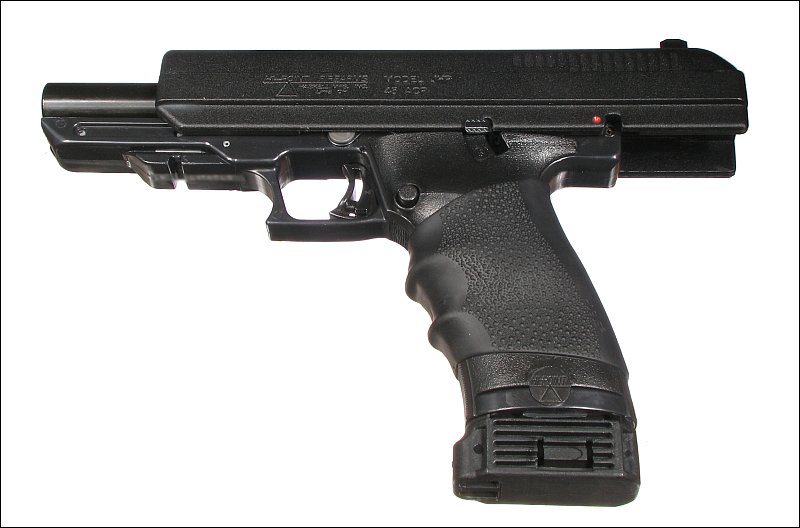
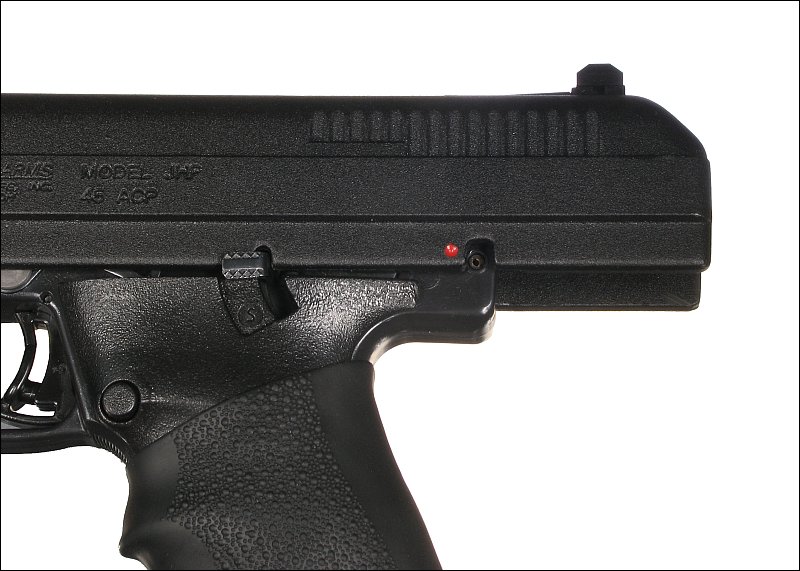 If you're buying a self-defense weapon for someone, let them help you choose the weapon. Tell them all of the pros and cons for each type. If possible, let them try the firearm before deciding which one to buy. This is easier if you're buying from a gun shop with a firing range or if you're buying one from a friend because they end user will get to fire it. If the handgun is too powerful and the user is injured or can't hold onto it when it's discharged, it may be nearly useless. Several well placed shots from a .38 or .380 (or even a .22) is better than one wild shot from a larger firearm.
Simple Blowback: For this and other types of semi-automatic firearms, the spent casing is ejected by the slide or bolt. When the action slams shut (closed), an ejection lug grabs the rim of the cartridge. There is a spring loaded plunger that applies force to the side of the casing that's opposite from the ejection port. As the bolt/slide moves rearward, the casing is torqued by the action of the spring loaded plunger (which is pushing away from the back of the casing) and the ejector lug (which holds the casing against the slide). As the casing clears the chamber (as it moves back with the slide), the casing is thrown out of the ejection port.
Locked Breech/Short-Recoil/Tilting Barrel Mechanisms:
Gas Operated: Rifles like the AK47, the Mini-14 and a relatively new version of the AR-15 use a rod to operate the bolt. The high-pressure gasses from the port in the barrel push against a piston which is connected to a rod. The rod applies force to the bolt and cycles the action.
Before we get into the larger secure storage options, you should know that these are only part of the overall security system that you use to secure valuables. One of the most important things that you should do is keep the number of people that know what you have to a minimum. Don't think that you can trust relatives because something like a nasty divorce can turn friends into adversaries. If you're someone constantly showing off what you have and constantly tell others why your things are better than theirs, expect to be a victim. Another thing that you should do is have an electronic security system that's monitored by a security company. If you're not home and someone breaks into your home, they can take all they time they need to get into a safe. If they're smart, they may use your own computer to go to youtube to see how to defeat the locks on your safes (there are plenty of videos that do just that). Having the alarm system will get the police to your home before most thieves can breach a safe. The following may sound brutal but it's a fact of life... If you are someone who is known to have lots of valuables (due to your employment or public your following - could apply to those who are on youtube and social media sites), it's important to have a silent alarm that can be triggered inconspicuously. There are those who will put a gun to your head or to that of a family member to make you open a safe. For those who don't think that it could happen because they always carry a firearm, think about your wife/son/daughter unloading groceries from the car. With hands full, someone could easily approach her and force her to open the safe or make you open the safe. Having a silent alarm will make it more likely that they will be caught. For those who want to be notified when there is movement on their property (in the home or near an entry door...), there are cameras that will notify you and provide video through a computer or smartphone. The cameras generally work through your home's network (wired or wirelessly) but there are some that can transmit from their own cellular connection. Both types can store video data. The network based cameras can store data on your computer or send it to a cloud server. The cellular based cameras typically store data on either a flash drive or send it to an online server.
Insurance:
Documentation: If you're capable of partially disassembling the firearms (often only requires removing one or two screws), place a small label with your name in an inconspicuous location (under the buttstock pad, between the barrel and the stock, between the grip scales and the frame of a pistol...).
Important: It's imperative that you store your firearms securely. There are two types of storage (at least). One is for long term storage and where you will store firearms that you won't necessarily need to access quickly. The other is quick-access storage. This is storage for firearms that you'll need to access if you have to defend yourself and/or your family from home invaders. Long term storage is generally done in a large standing gun safe. For quick-access storage, you would use something more like the safe below. It allows you to open it with a key or a code. These and similar safes would be securely fastened with large screws or with the supplied steel cable. This is an NV400 made by GunVault. Other models have a third way of opening the safe. They use a biometric reader that reads your fingerprints. I don't personally like them because an intruder can force you to put your finger on it. If you use it, you should use something other than your right index finger (the most commonly used) as the key.
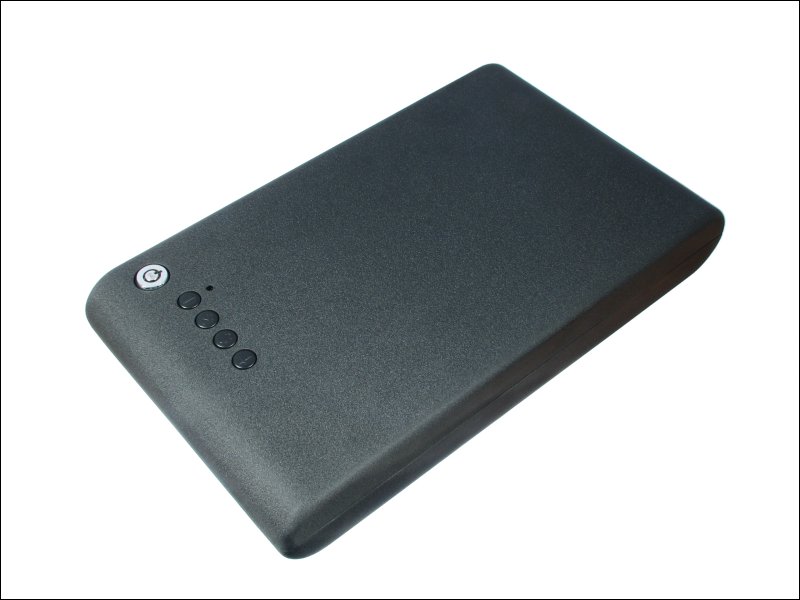
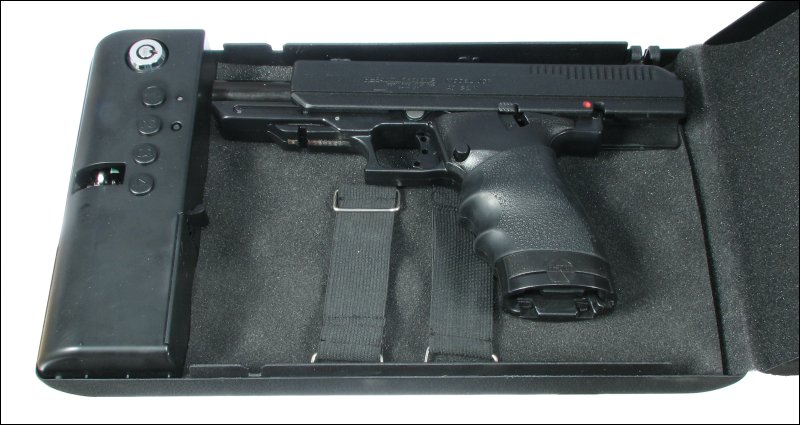 The following type of lock is used to block the trigger. As the sticker states on this lock, this must not be used on a loaded firearm. Poor fitting locks and locks that are not well suited for a particular gun can slide and can push against the trigger. This lock is a combination lock. Given time, someone can go through all of the possible combinations and eventually get into the lock. There are also key locks. Key locks can be picked (thanks YouTube). Again, remember that locks are only useful to keep honest people honest.
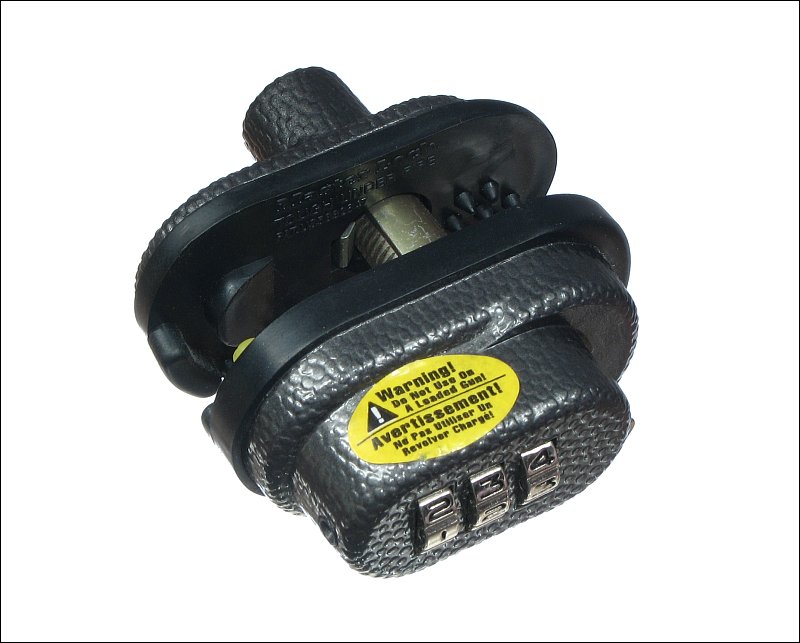 If you believe that someone is trying to find the combination of a lock, you can apply a tamper-evident label over the lock. If they are applied over a key hole or a combination lock, the stickers will provide definitive proof that someone has tampered with it. Don't use labels that are available locally unless they have unique numbers on each one (like the ones below). If you use labels like this, you need to clean the area to remove all oils. 91% rubbing alcohol is typically safe for most surfaces. If it's not cleaned of all oils, the label will not break up and can be laid back down without showing that someone has tampered with it.
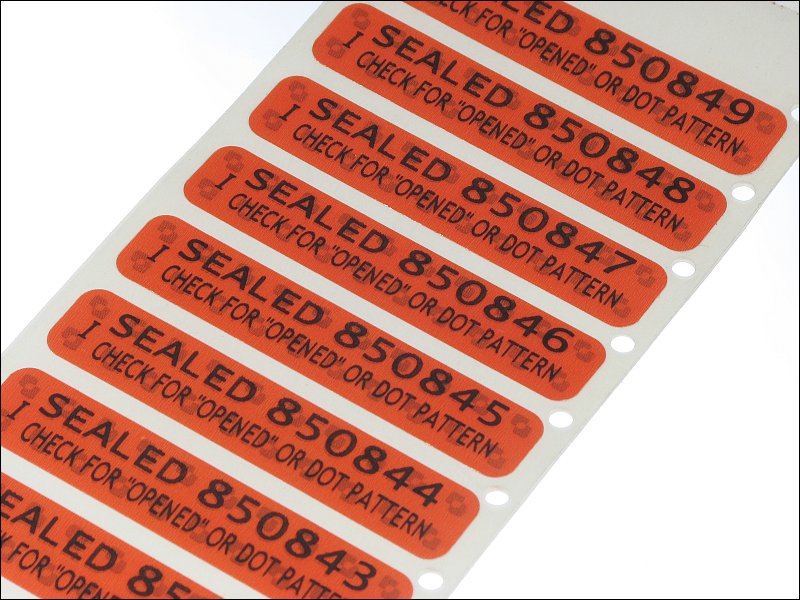
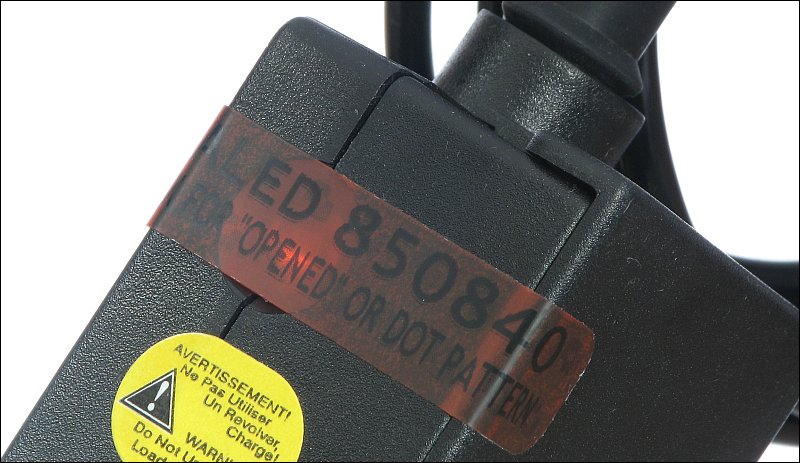 Above shows the label when initially applied. Below shows how it looks when it's been lifted and then laid back down. No matter what you do, you will never be able to get it to look like it did before it was lifted (assuming that the surface was clean when the label was initially applied).
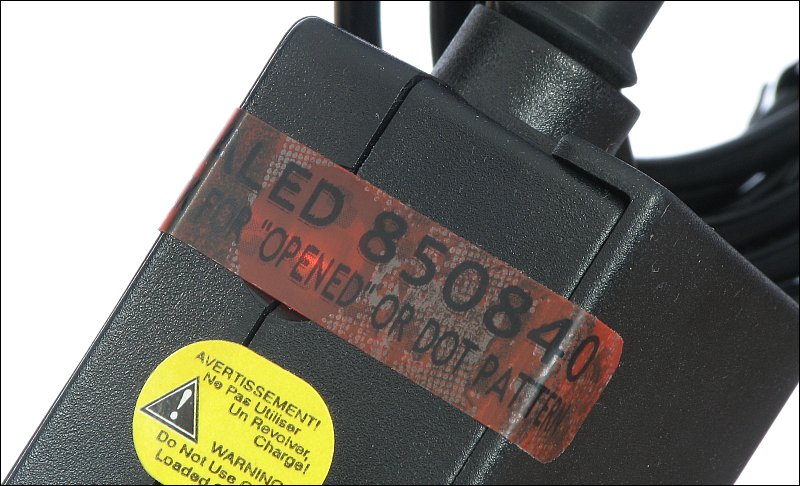
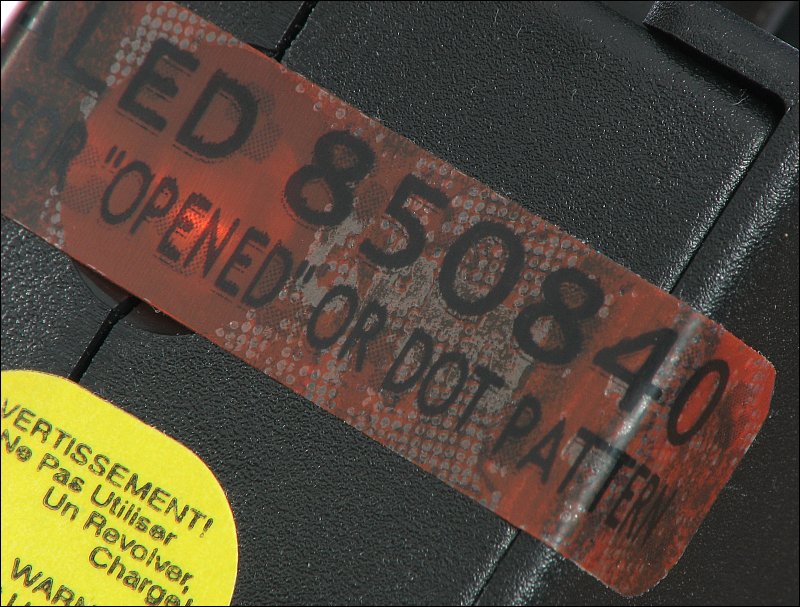
Gun Safe vs Gun Cabinet:
Safe Safety! For those with multiple firearms (especially long guns), you may need a standing gun safe or cabinet. There is a difference between a gun 'safe' and a gun 'cabinet'. In general, a gun cabinet is made from less robust materials. In the past, people had wood gun cabinets with glass doors. With the way society is now, it's important to have something a bit stronger. The bare minimum secure storage is a cabinet. These are typically built a bit lighter than a safe but can keep guns out of the hands of most people (casual visitors to your home, children, criminals in search of a quick snatch and grab...). The cabinets that use keys, typically have multiple locks to operate multiple rotating plates or a combination lock and a handle to slide locking plates into slots in the casing. Depending on the cabinet, a determined thief, given enough time, can breach the cabinet and steal the contents. Safes typically use round locking bolts that slide into the door frame or behind the door frame to prevent the door from being opened. To break into a safe, it takes a bit more effort than most 'cabinets'. Typically, the metal is thicker and there are no areas where you can simply break spot welds to open the safe. This doesn't, however, mean that they're completely secure. Someone with knowledge of the design of the safe and a few tools can open the safe.
Fireproofing: Some fireproof safes have a door seal that expands when heat is applied. This helps protect the contents from smoke damage.
Side Note...
Securing the Safe:
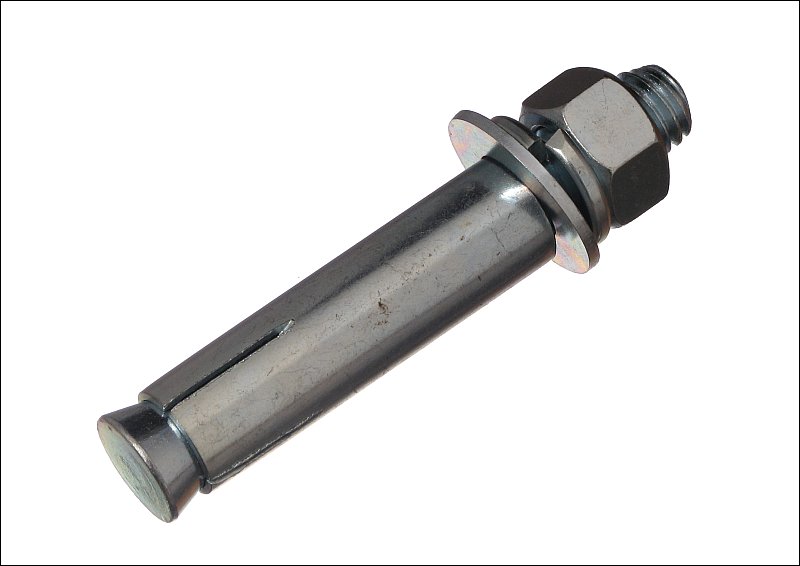 For scale, the anchor above is about 3.5" long, with a 1/2" diameter bolt through its center. You'd have to drill a hole a bit over 2.5" deep for this anchor. There are a couple of things you need to know about using concrete anchors... When you install an anchor, you need to know what is in the slab and how thick the slab is. In most homes, there are pipes in the slab. If you drill into a water pipe or other plumbing, it could be costly to repair. When drilling the holes, there may be an option to drill completely through the slab. If you drill completely through the slab, that may allow you to remove the anchor by simply removing the nut and driving the bolt into the ground under the slab. Bear in mind that drilling through the slab could allow moisture to seep up into the hole and cause corrosion problems. Filling the hole with silicone before inserting the anchor could prevent the moisture from seeping up. If you do not drill completely through the slab, you'll have to cut the bolt off at the slab to remove the anchor. One reason that it's good to be able to drive the anchor through the slab is because the anchors don't always cooperate. Sometimes an anchor will start to expand but the sleeve will prefer to follow the rotation of the bolt instead of holding to the concrete. When this happens after the anchor has expanded a bit, it can be very difficult to remove the anchor from the top of the slab.
This is the end of page 1 for the Introduction to Firearms. Click HERE or click on 17b in the directory to go to page 2.
|
|
|
|